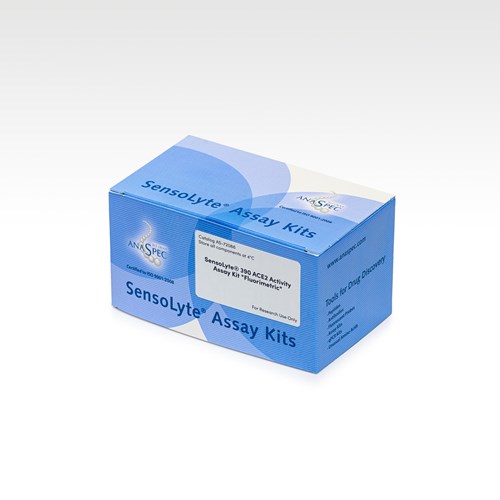B-type Natriuretic Peptide, BNP-32, human
- Cat.Number : AS-24015
- Manufacturer Ref. :
-
Availability :
In stock
B-type (Brain) natriuretic peptide (BNP) is a 32 amino acid hormone initially isolated from the porcine brain, but mainly produced by the heart ventricles. It is released from a prepro-hormone after cleavage of a signal peptide and further processing by a protease with a conserved recognition sequence (RXXR-S). This cleavage generated NT-proBNP (76aa) and the biologically active 32aa BNP-32, which are secreted in blood in equimolar concentrations.
BNP-32 is secreted by cardiomyocytes in response to myocardial stretch and overload resulting from hypervolaemia and increased blood pressure. It is known to oppose the renin-angiotensin-aldosterone system and exert vasodilatory effects. This 32 amino acid peptide contains a 17 amino acid ring structure that is common to all natriuretic peptides.
Specifications
| Chemistry | |
| Sequence one letter code |
|
|---|---|
| Sequence three letter code |
|
| CAS registry number |
|
| Molecular Formula |
|
| Molecular Mass/ Weight |
|
| Modification | |
| Conjugation |
|
| Quantity & Purity | |
| Purity |
|
| Storage & stability | |
| Form |
|
| Storage Conditions |
|
| Activity | |
| Biomarker Target | |
| Research Area | |
| Sub-category Research Area | |
| Usage |
|
| Source | |
| Source / Species |
|
Downloads
You may also be interested in the following product(s)



References
B-type Natriuretic Peptide: A Review of Its Diagnostic, Prognostic, and Therapeutic Monitoring Value in Heart Failure for Primary Care Physicians
J Am Board Fam Prac . 2003 Jul 08 ; 16(4) 327 | DOI : https://doi.org/10.3122/jabfm.16.4.327
- R. Cardarelli
- et al
A new natriuretic peptide in porcine brain
Nature . 1988 Mar 03 ; 332 78 | DOI : 10.1038/332078a0
- T. Sudoh
- et al
Natriuretic Peptides—Relevance in Cardiovascular Disease
JAMA . 1998 Dec 16 ; 280(23) 1983 | DOI : 10.1001/jama.280.23.1983
- B. Cheung
- et al
Fortnightly Review: Ten years of natriuretic peptide research: a new dawn for their diagnostic and therapeutic use?
BMJ . 1994 Jun 18 ; 308 1615 | DOI : https://doi.org/10.1136/bmj.308.6944.1615
- A. Struthers

